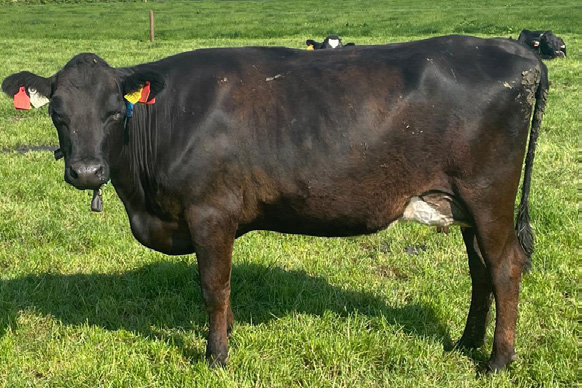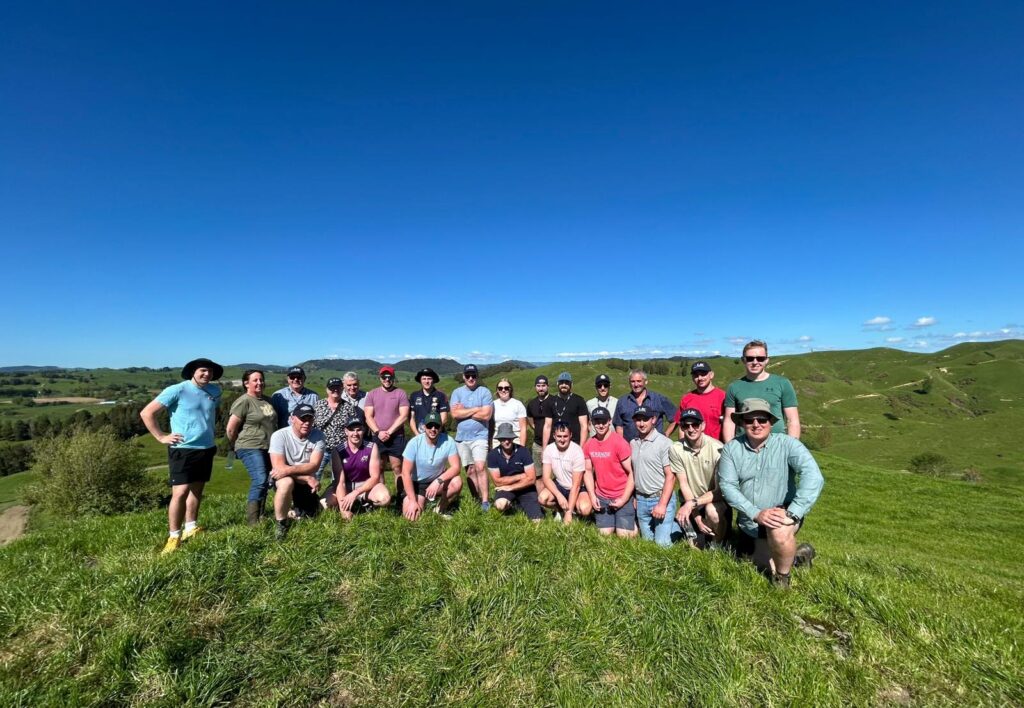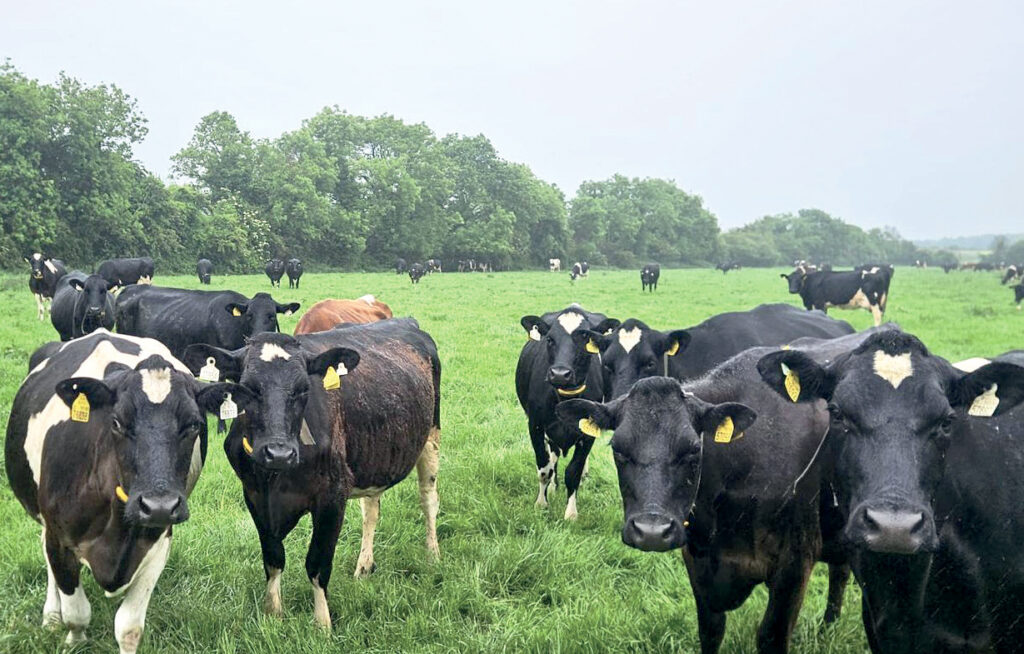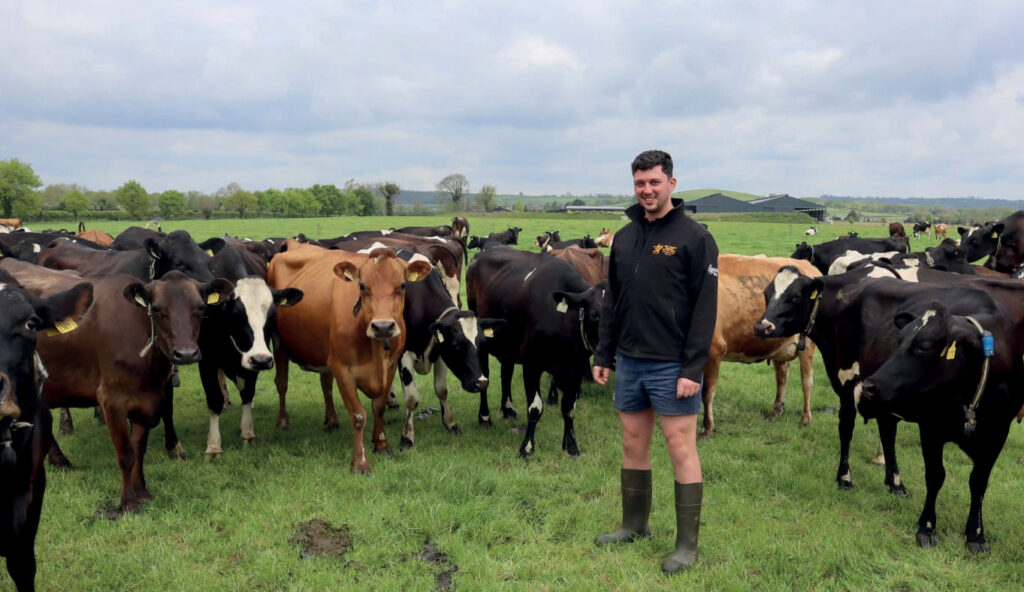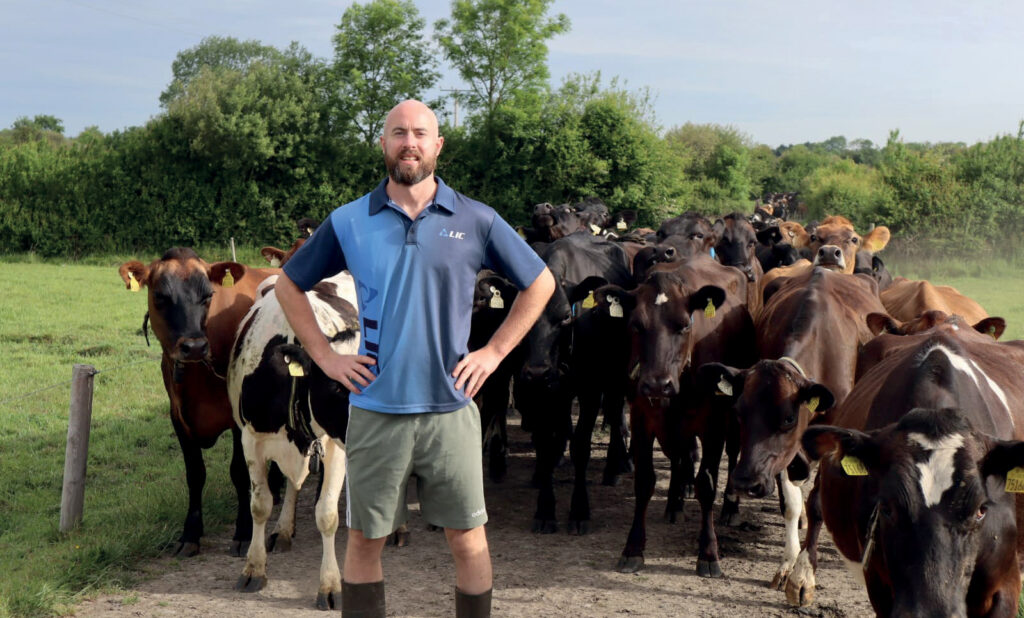Earlier this year, Teagasc Moorepark confirmed the launch of a new chapter in the ongoing project: Next Generation Herd II. Researchers Brian McCarthy and Frank Buckley (pictured above) will lead the system trial study.
Established in 2013, the Next Generation Herd (NGH) is a research herd offering
a futuristic view of the phenotypic performance of dairy cows selected for exceptionally high genetic merit, based on Ireland’s dairy breeding strategy – the Economic Breeding Index (EBI).
Since the initial experiment, the expansion of the national herd following the removal of the European Union milk quota, combined with the effects of climate change, has led to multi-factorial sustainability challenges for the Irish dairy industry.
These include increased enteric methane emissions, stagnant/declining water quality, and oversupply of low-value male dairy calves. Consequently, ongoing evaluation of breeding goals and strategies (e.g the EBI) is prudent to validate the direction of genetic gain.
Next Generation Herd II 2025-2029
The Next Generation Herd II experiment 2025-2029, will place renewed emphasis on the impact of organic nitrogen (N) and stocking rate on farm productivity, profitability, and environmental performance.
This focus is driven by recent changes to the Nitrates directive and newly imposed limits on nitrogen fertiliser use. The revised whole-farm system research study (NGH II), which includes progeny performance, will evaluate three contrasting dairy cow genotypes. Each genotype group will consist of 66 cows:
National Average – current national average Holstein Friesian (HF) based on EBI
• Elite – current top 5% HF based on EBI
• Elite Jersey x HF (JEX and FRX) – current top 5% JEX based on EBI
The genotypes will be compared across three contrasting pasture-based systems, differing in milking platform organic N stocking rates of:
• 170 kg organic N/ha (whole farm – all area available as milking platform)
• 220 kg organic N/ha (whole farm – all area available as milking platform)
• 270 kg organic N/ha (milking platform
– the whole farm organic N stocking rate will be 220 kg N/ha by utilising an out-block equating to 19% of total farm area)
The EBI, sub-indices and PTA values for National Average, Elite and JEX cows within the Next Generation Herd II are presented in Table 1 below.
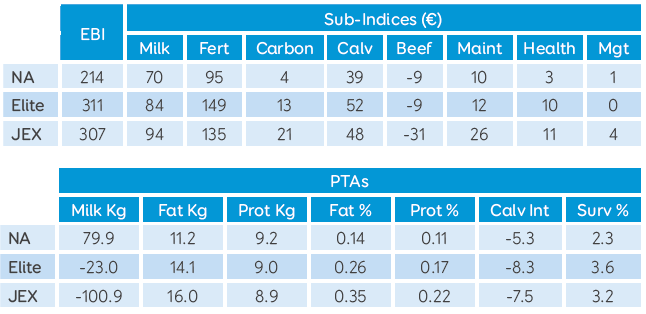
Cows and in-calf heifers from within Teagasc and commercial herds across the country were identified and sourced in late 2024 and early 2025 and incorporated into the Next Generation Herd at Dairygold Research Farm.
A strict disease screening and biosecurity protocol was implemented to ensure a disease-free status and mitigate the disease-risk associated with assembling cows from multiple herds. For 2025, the herd will comprise of 59% 1st lactation, 27% 2nd lactation and 14% 3rd lactation cows. The objective of the study is to validate the breeding strategy and investigate the economic and environmental efficiency of the genotypes and production systems.
A strict mating strategy will be implemented to optimise the use of dairy sexed semen for the replacement generation and high-merit beef semen to enhance the value of non-replacement dairy progeny. This approach aims to maximise the overall calf crop value from dairy cows of contrasting genetic backgrounds.
This will enable the investigation of interactions between dairy cow genotype and beef sire genotype on progeny slaughter characteristics. LIC are delighted to be involved in supplying sexed semen for the Elite Jersey x HF genotype cohort in the study and will watch the results of the trial closely.
This work will contribute to a forward-looking blueprint for sustainable milk production. In previous trials conducted by Teagasc, where the performance of different genotypes was evaluated, the Jersey x Holstein Friesian crossbred consistently demonstrated impressive performance and emerged as the most efficient cow for the Irish grass-based system.
The study seeks to strengthen farmer confidence in their breeding decisions. LIC fully supports the great work Teagasc researchers are doing to improve the economic and environmental sustainability of the Irish dairy industry.
